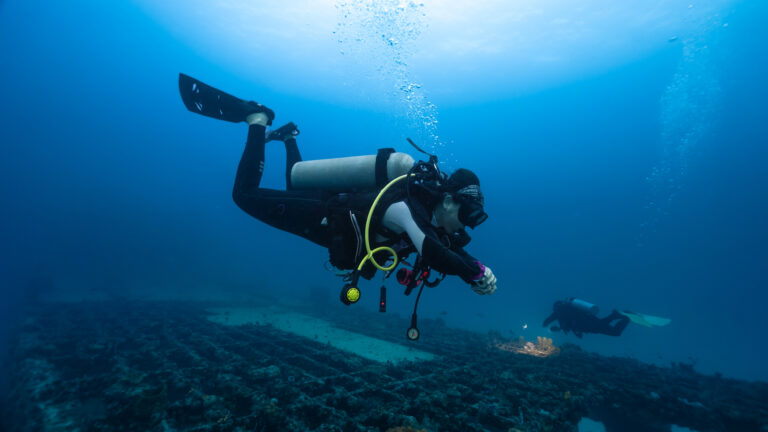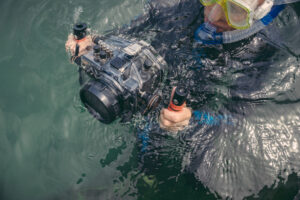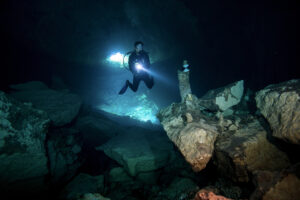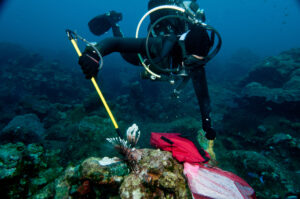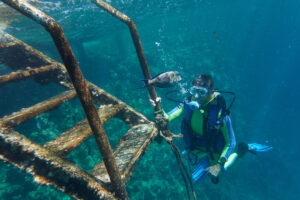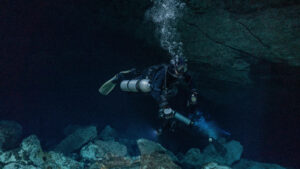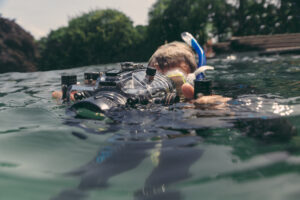What is Residual Nitrogen Time?
The world of scuba diving is one that demands attention to detail, respect for the natural world, and an understanding of physics and physiology principles. One crucial concept in this respect is that of “Residual Nitrogen Time” (RNT), an integral part of dive planning that influences dive safety, duration, and depth. This concept revolves around the body’s nitrogen absorption and release processes, directly tied to decompression sickness prevention.
Understanding Residual Nitrogen Time
Residual Nitrogen Time, in essence, is the time it would take for a diver’s body to off-gas, or eliminate, any surplus nitrogen accumulated during a dive. When divers descend, the pressure of the surrounding water increases, causing the nitrogen in the breathing gas—usually air or Nitrox—to dissolve into the body’s tissues. Once the diver ascends and the pressure decreases, this excess nitrogen is released from the tissues and exhaled.
However, if a diver ascends too quickly or dives again before all the residual nitrogen has been exhaled, it can form bubbles in the body, leading to decompression sickness, also known as “the bends.” RNT, therefore, is a crucial factor in planning repetitive dives and ensuring they can be conducted safely.
The Science Behind Residual Nitrogen Time
The body’s rate of nitrogen absorption and release is not constant but varies depending on several factors, such as depth, time, and the individual’s physiology. Divers absorb nitrogen more quickly at greater depths due to the higher pressure. Conversely, the process of off-gassing slows down as the pressure decreases during ascent and on the surface.
During a surface interval—the time between two dives—the body continues to off-gas the residual nitrogen. The duration of this surface interval must be long enough to reduce the nitrogen levels in the body to a safe amount before starting the next dive. This duration is where the concept of Residual Nitrogen Time comes into play.
Calculating Residual Nitrogen Time
To calculate RNT, divers refer to decompression tables or use dive computers. Decompression tables, such as the ones produced by the U.S. Navy or the Professional Association of Diving Instructors (PADI), provide divers with a conservative estimate of their RNT based on their previous dive’s depth and duration.
Dive computers, on the other hand, offer more personalized estimates by continually calculating the diver’s nitrogen loading in real-time. Both methods are designed to provide a safe limit for nitrogen accumulation and thus minimize the risk of decompression sickness.
Residual Nitrogen Time and Repetitive Dives
The concept of RNT is especially important when planning repetitive dives, i.e., multiple dives within a 24-hour period. The RNT from the first dive is added to the actual bottom time of the subsequent dive to determine the total nitrogen time. This total time is then used to compute the safe depth and duration for the repetitive dive.
The Importance of Residual Nitrogen Time
Understanding and effectively managing Residual Nitrogen Time is fundamental to safe scuba diving. Ignoring RNT could lead to a build-up of nitrogen in the body, increasing the risk of decompression sickness—a potentially life-threatening condition.
Scuba diving is a thrilling activity that offers a unique perspective on the wonders of the underwater world. But like all adventurous pursuits, it comes with risks. By understanding concepts like Residual Nitrogen Time, divers can enjoy the beauty beneath the waves while ensuring they surface safely every time.
Decompression Tables and Dive Computers: Tools for Calculating Residual Nitrogen Time
Decompression tables and dive computers are two primary tools that divers use to calculate RNT. Both tools employ algorithms based on scientific research into how the human body absorbs and releases nitrogen under varying pressures.
Decompression tables, such as the Bühlmann Decompression Algorithm, provide a conservative, generalized estimate of nitrogen absorption and release. These tables present a maximum dive time for a given depth and require divers to cross-reference their total nitrogen time against the table to plan subsequent dives.
Dive computers offer a more individualized approach. These devices, worn like a wristwatch, use algorithms to continuously calculate a diver’s nitrogen load in real-time, based on the depth and duration of the dive. Some dive computers also consider factors like temperature and ascent rate, providing an even more precise calculation of RNT.
The Role of Residual Nitrogen Time in Dive Planning
Effective dive planning involves considering many variables, including dive site conditions, equipment, diver skill level, and crucially, Residual Nitrogen Time. A well-planned dive includes not only the projected bottom time and depth for each dive but also the RNT and required surface interval to off-gas any residual nitrogen.
Given the significant role that RNT plays in determining the safe duration and depth for repetitive dives, it’s clear that understanding this concept is fundamental to every diver. Dive training organizations emphasize this knowledge in their courses, ensuring that divers are well-equipped to plan their dives and dive their plan.
Reducing Risks and Enhancing Safety with Residual Nitrogen Time
The primary goal of understanding and effectively managing RNT is to reduce the risk of decompression sickness. This condition can manifest in several ways, ranging from joint and muscle pain, skin rashes, and dizziness, to more serious symptoms like paralysis and death.
By properly calculating RNT and adhering to safe diving practices, divers can significantly reduce these risks. This includes performing safety stops during ascents, maintaining a slow and controlled ascent rate, and allowing sufficient surface intervals between dives.
Key Takeaways
Residual Nitrogen Time is a fundamental concept in scuba diving. It’s an essential aspect of dive planning and directly influences a diver’s safety and enjoyment of the underwater world. By understanding RNT and applying it effectively, divers can ensure they’re exploring the depths responsibly and safely. This understanding, coupled with the use of decompression tables or dive computers, can help divers make informed decisions, maximize their dive times, and ultimately, protect their health and well-being while exploring the fascinating underwater world.

